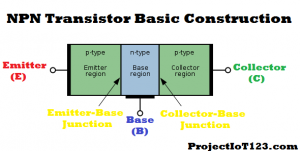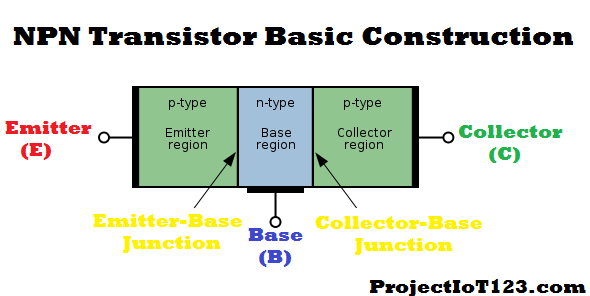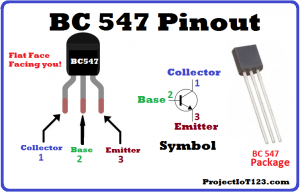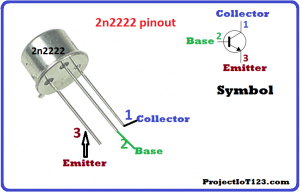What is a Transistor 32
 I hope you all are fine; in this article I will discuss the basics of transistor. Transistor is an important electronic component in electronics which has a lot of applications and is employed in almost every electronic circuit. I will discuss the basics of the transistor in this article.
I hope you all are fine; in this article I will discuss the basics of transistor. Transistor is an important electronic component in electronics which has a lot of applications and is employed in almost every electronic circuit. I will discuss the basics of the transistor in this article.
After reading this post the user will be able to learn about the construction and working of the transistor so sit back, keep reading and enjoy learning.
Types of Transistors:
There are a variety of transistors available in the market with each optimized to perform a particular task. On the basis of the working the transistors are categorized into two major categories.
- Bipolar Junction Transistor.
- Unipolar Junction Transistor.
What is a Transistor:
Bipolar transistor transistors are those in which the conduction is carried out by both types of charge carriers that is holes and electrons that is why the term bipolar is coined for these types of transistors. In this article I will stick to the bipolar junction transistor only.
On the other hand a Unipolar Junction Transistor is the one in which the conduction is carried by only one of the two charge carriers either holes or electrons.
Bipolar Junction Transistor (BJT):
As discussed earlier that the term bipolar in the name BJT implies that this type of transistor works with both types of charge carriers and it has nothing to do with the junction. On the basis of the construction of the Bipolar Junction Transistors they are further classified in to two categories:
- NPN Bipolar Junction Transistor.
- PNP Bipolar Junction Transistor.
In the NPN transistor the P region is sandwiched between the two N regions and two PN junctions will be formed and similarly in the PNP transistor the N region is sandwiched between two P regions so that two PN junctions are formed.
Construction of NPN BJT:
As described in the previous section that the NPN BJT has the P region sandwiched between two P regions. N region of the transistor has electrons as majority charge carriers whereas the P region has the hole as the majority charge carriers. BJT can be made up of silicon or germanium or a combination of different elements as substrate and these elements or compounds are doped with donor and acceptor elements to make the N region and the P region respectively:
The basic construction of the NPN bipolar junction transistor is as shown in the following image:

As shown in the above image that the Transistor has three leads. Each lead of the transistor is connected to each region of the transistor and has assigned the name according to the region to which it is connected. One lead of the transistor is called the “Collector”, one is called the “Emitter” and another is called “Base”.
The Transistors are available in different packages and the position of the “Emitter”, “Collector” and “Base” is determined form the datasheet of the particular transistor.
Transistors pinout:
The pinout of the BC547 transistor, its schematic symbol and package are a shown in the following image:
Applications of Transistor:
Although this is an introductory article however for motivation I am referring the common applications of the transistors. The common applications of the transistor listed as follows:
- Transistors are used in amplifiers.
- Transistors find applications in switching circuits such as the relay modules.
- Transistors can be found in almost every IC.
- Digital TTL logic family uses Bipolar Junction Transistor as its main electronic component.
2n2222 pinout
here is the 2n2222 npn transistor pinout.it has three pins
Transistor Symbol:
That is all for now I hope this article would be helpful for you. In the next article I will come up with more interesting topics. Till then stay connected, keep reading and enjoy learning(basics of transistor).



